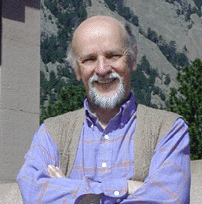Following my GWPF report on Hubert Lamb, there was some criticism (in comments and by email) that I was too soft on Lamb’s successor at CRU, Tom Wigley. These critiques fit the common portrayal of Wigley as an eminence gris, a shadowy figure scheming in the background, putting forward the more reckless younger scientists, while carefully maintaining plausible deniability.
Perhaps. And I can certainly see how this view has developed during the second wave of scepticism that arose with the Hockey Stick Controversy. However, this view tends to distort, if not Wigley’s personal intent, then his rôle in the whole saga.
Wigley is surely one of the most important and curious characters in our whole story. Therefore we should be especially careful not to let accusations of malevolence distract from the problem of his enigmatic rôle. Some may well wish to lay accusations as though of a crime, where intent is crucial to conviction and sentencing. However, this is not our problem. Our problem is the historical problem: the hows and whys of this monumental corruption of our scientific institutions. In this, Wigley’s rôle, rather than his intent, is of primary importance.
For a social phenomenon, a social explanation is the most satisfying. The transformation of the science is easily explained sociologically, where psychology need only come in with its gross emergent social expression—we may call this human nature. If Wigley did not exist, then social forces would have invented him, maybe not at CRU, but somewhere.
Wigley in the economics history of CRU

Tom Wigley (Source NCAR)
There are a set of social factors that go a long way towards explaining the successful transformation effected by Wigley at CRU. Indeed, these are of sufficient force that the attribution of a sinister motive or stratagem is hardly required. Consider firstly that many competent and distinguished scientists, however so much they strive, never achieve even one first-author publication in Nature. Such publications are benchmarks of scientific advancement. As far as we know, no historical climatology paper from CRU ever made the grade. Indeed, Astrid Ogilvie (an historical climatologist at CRU from the 1970s) explained by email that it was hard to get their research published in any peer review journals until the specialist journal Climatic Change arrived in 1977. Yet, in 1981, on the CO2 question, Wigley had his name up on top, in Nature, three times in just two months!
Continue reading

